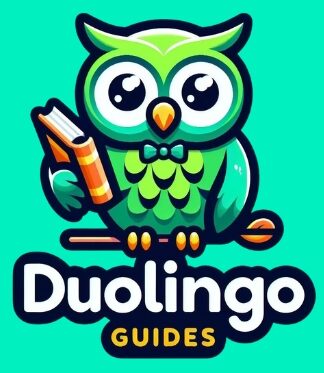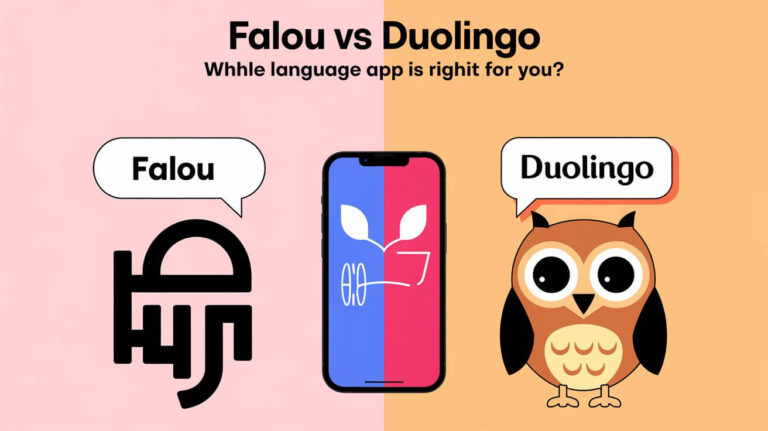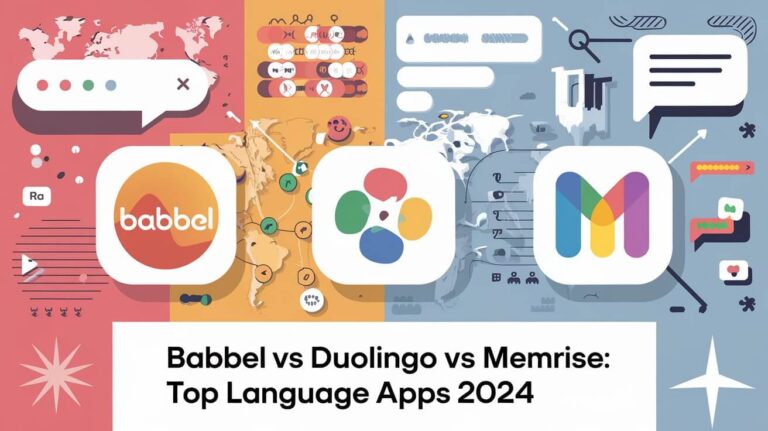Learning German has never been easier, thanks to the rise of language learning apps. Babbel and Duolingo are two popular choices for German learners, each offering unique features and approaches. This guide breaks down the Babbel vs Duolingo German debate, helping you pick the best app for your Deutsche learning journey.
The World of Learning Languages
Rise of Language Learning Apps
Gone are the days of dusty textbooks and clunky cassette tapes. Language learning apps have revolutionized how we pick up new tongues. They’ve made learning more accessible, engaging, and often, more fun. Among these digital polyglots, Babbel and Duolingo stand out as top contenders.
Why German?
German is a language of poets, philosophers, and… pretty long words. It’s the most widely spoken language in the European Union and a valuable asset for career prospects. Whether you’re dreaming of Oktoberfest or eyeing a job in Berlin’s tech scene, learning German opens doors.
Babbel: A Closer Look
Babbel’s Approach to German
Babbel takes a structured approach to teaching German. It focuses on practical, real-life situations you might encounter. The app aims to get you speaking from day one, with a strong emphasis on pronunciation and conversation skills.
Lesson Structure and Content
Babbel’s German lessons are bite-sized, typically lasting 10-15 minutes. They cover a range of topics, from basic greetings to more complex grammar concepts. Each lesson builds on the previous one, creating a cohesive learning experience.
The app uses a mix of exercises:
- Fill-in-the-blank sentences
- Matching words to pictures
- Listening comprehension tasks
- Speaking exercises (with speech recognition)
Pricing and Plans
Babbel operates on a subscription model. As of 2024, prices start at $17.95 per month, with discounts for longer commitments. A 12-month subscription brings the cost down to about $6.95 per month. They also offer a 20-day money-back guarantee, so you can test the waters risk-free.
Duolingo: The Green Owl’s German Offerings
Duolingo’s German Course
Duolingo’s mascot, the green owl, has become synonymous with free language learning. Their German course starts from absolute basics and progresses through various topics and difficulty levels.
Gamification and Motivation
Duolingo’s strength lies in its gamified approach. Learning feels like playing, with:
- Experience points (XP) for completed lessons
- Streaks for daily practice
- Leaderboards to compete with friends
- Cute animations and sounds for correct answers
This gamification can be highly motivating, especially for learners who struggle with consistency.
Free vs. Paid Options
Duolingo’s basic version is free, which is a huge draw for many learners. The paid version, Super Duolingo (formerly Duolingo Plus), removes ads and offers additional features like offline lessons and unlimited hearts (attempts). As of 2024, Super Duolingo costs $6.99 per month.
Head-to-Head Comparison
User Interface and Experience
Babbel’s interface is clean and straightforward, focusing on the learning content. Duolingo, on the other hand, is colorful and playful, with its owl mascot cheering you on.
German Grammar Explanations
Babbel shines when it comes to grammar explanations. It provides clear, concise notes on German grammar rules, often comparing them to English structures. Duolingo tends to take a more implicit approach, expecting users to pick up grammar through exposure and repetition.
Vocabulary Building Techniques
Both apps use spaced repetition to help with vocabulary retention. Babbel integrates new words into realistic dialogues, while Duolingo often uses more playful, sometimes quirky sentences.
Speaking and Pronunciation Practice
Babbel puts a strong emphasis on pronunciation, with detailed explanations of German sounds and plenty of speaking exercises. Duolingo offers speaking practice too, but it’s not as comprehensive.
Writing Skills Development
Babbel includes writing exercises that gradually increase in complexity. Duolingo’s writing practice is more limited, often focusing on translating sentences or filling in blanks.
Beyond the Basics: Advanced Features
Babbel Live Classes
For those wanting more interaction, Babbel offers live online classes with real teachers. These classes, available at an additional cost, allow for real-time conversation practice and personalized feedback.
Duolingo Stories and Podcasts
Duolingo has branched out with Stories – short, interactive narratives that improve reading comprehension. They also offer a German podcast for intermediate learners, providing authentic listening practice.
Real User Experiences
Success Stories
Many users have found success with both apps. Babbel users often praise the app’s structured approach and grammar explanations. Duolingo users frequently mention how the app’s gamification keeps them motivated to practice daily.
Common Criticisms
Babbel users sometimes find the subscription cost a barrier, especially when compared to Duolingo’s free option. Some Duolingo users feel the app doesn’t provide enough explanation, particularly for grammar points.
Complementary Learning Strategies
Combining Babbel and Duolingo
Many learners find success in using both apps. Babbel can provide the structure and explanations, while Duolingo offers fun daily practice. This combination can create a well-rounded learning experience.
Additional Resources for German Learners
To supplement app learning, consider:
- German podcasts for listening practice
- YouTube channels for visual learners
- Language exchange apps for conversation practice
- German news websites for reading authentic content
The Decision: Babbel vs Duolingo for German
Best for Beginners
For absolute beginners, Duolingo’s gamified approach can be less intimidating. It’s a great way to dip your toes into German learning without financial commitment.
Best for Intermediate Learners
Intermediate learners might find Babbel more beneficial. Its more structured approach and detailed explanations can help bridge the gap between basic and advanced German.
Best Value for Money
If budget is a major concern, Duolingo’s free version offers incredible value. However, for those willing to invest, Babbel’s comprehensive approach and live class options provide excellent value for serious learners.
FAQs: Babbel vs Duolingo German
Can I become fluent in German using only apps?
While apps are fantastic tools, true fluency requires diverse learning methods and real-world practice. Use apps as a foundation, but supplement with conversation practice, immersion, and other resources.
How long does it take to complete the German course on each app?
Completion time varies based on learning pace and consistency. On average, dedicated learners might complete Babbel’s German course in 6-12 months. Duolingo’s course length is more flexible, but users often report similar timeframes for reaching the end of the tree.
Are there any free alternatives to Babbel and Duolingo for learning German?
Yes, several free resources exist:
- Deutsche Welle offers free German courses
- Memrise has user-created German courses
- YouTube channels like Easy German provide free video lessons
Remember, both Babbel and Duolingo offer unique strengths in the Babbel vs Duolingo German matchup. Consider trying both to see which suits your learning style best. Viel Glück (Good luck) on your German learning journey!







